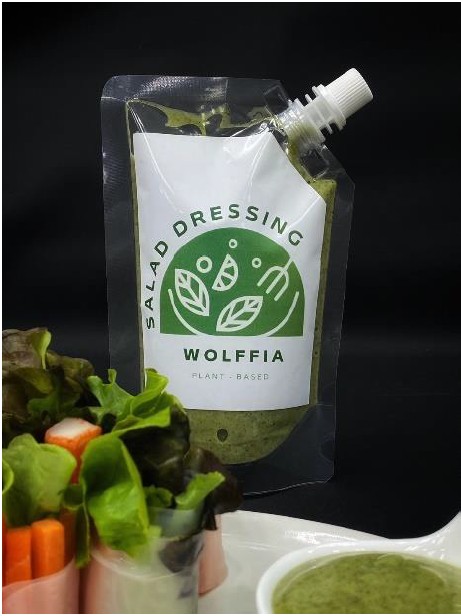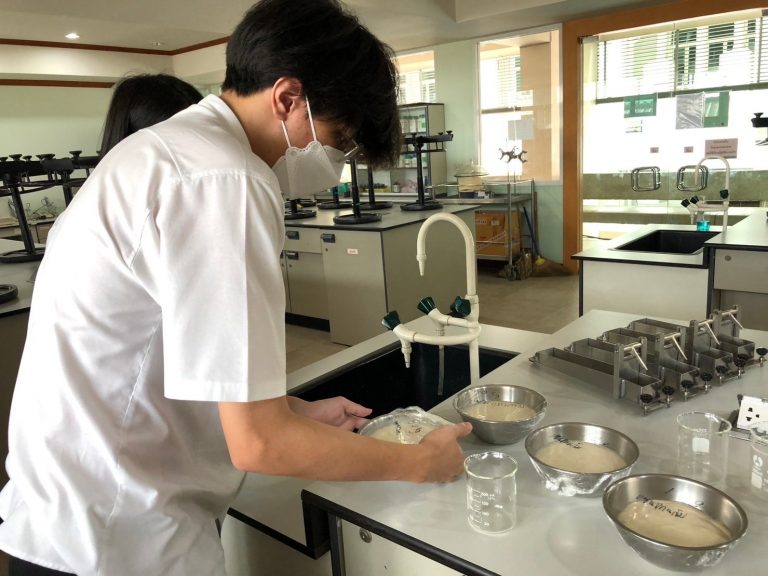Salads are among the top choices for health-conscious individuals, but solely vegetable-based salads can be bland. To enhance their flavor, salad dressings play a crucial role. However, conventional dressings often contain high levels of cholesterol and saturated fats, which can contribute to obesity and heart diseases. Moreover, the use of Egg yolks in salad dressing poses risks of bacterial contamination and shortens product shelf life.
To address these issues, Mr. Surachet Wannaphan and Mr. Supanut Ketnoi, students of Food Service Industry at RMUTP, collaborated to develop a recipe for a healthier salad dressing using readily available ingredients. Their formula incorporates creamy tofu and yellow soybean, enriched with dried wolffia, aiming to provide a nutritious option for households.


Mr. Surachet explains that most commercial mayonnaise-based dressings are high in saturated fats, with egg yolks containing up to 31.9% saturated fats. Therefore, they sought to reduce saturated fat content by substituting tofu for egg yolks, as tofu is high in protein but low in saturated fats and cholesterol.
Mr. Supanut adds that dried wolffia were included to enhance protein content and nutritional value. Research shows that dried wolffia contain approximately 20-30% protein, higher than typical plant sources, along with essential amino acids beneficial for health. This aligns with the growing interest in developing healthier food options, particularly in the health food industry.


Their dressing recipe primarily consists of soft white tofu, apple cider vinegar, salad oil, sugar, black pepper, dried wolffia, and Santan gum. They conducted several experiments to determine the optimal ratio of Santan gum to maintain creaminess and prevent separation over time. Additionally, they assessed color, viscosity, flow rate, and sensory qualities through sensory evaluations involving 50 participants.
Their findings indicate that the dressing with 0.30% Santan gum achieved the highest sensory scores, indicating better texture and consistency. Moreover, increased Santan gum concentration led to improved viscosity and reduced flow rate, enhancing the dressing’s stability. Incorporating dried wolffia at 1% resulted in the most preferred sensory attributes, including color, aroma, taste, texture, and overall liking


Dr. Supakorn Masawang, associate professor of Food Technology, emphasizes the importance of continued research in extending product shelf life and ensuring nutritional completeness. He suggests exploring retort sterilization and suitable packaging to maintain product safety and appeal to health-conscious consumers and entrepreneurs alike.
For further inquiries, please contact 061 635 3997.




